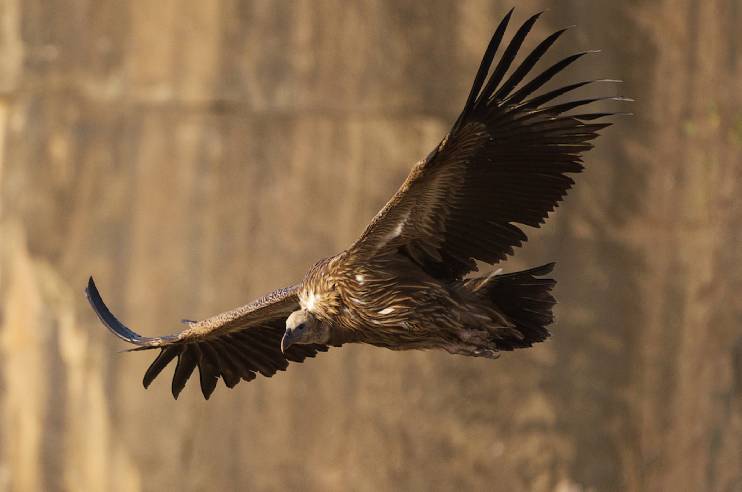SYLLABUS
GS-3: Conservation, environmental pollution and degradation, environmental impact assessment.
Context:
The Wildlife Institute of India (WII) conducted the first nationwide survey of four critically endangered resident vulture species between February 2023 and January 2025, representing the first systematic nationwide effort to assess their nesting and status.
More on the News
- The study documents nesting data for four critically endangered species: White-rumped Vulture, Indian Vulture, Slender-billed Vulture, and Red-headed Vulture.
- To conduct the survey, researchers first reviewed published literature to identify known nesting sites, which were then verified through field visits. Direct nest counts were carried out during the peak nesting season with each active nest representing a breeding pair.
Key Findings of the Assessment
- A total of 425 historical nesting sites were recorded, but only 120 are currently active, which shows a steep decline.The survey identified 93 new nesting sites, resulting in total 213 active sites across the country with nearly half of which (103) lie within protected areas (PA).
- Madhya Pradesh and Rajasthan together hold 63 percent of all nests, which shows a regional concentration of remnant populations.
- The Indian Vulture remains the most widespread species but has disappeared from 30 percent of its historical locations.
- The White-rumped Vulture, earlier the most common species, is now active at only 13 percent of its previous nesting sites.
- The Slender-billed Vulture has lost all 47 historical nesting sites and now nests only at 12 newly found locations in Upper Assam.
- The Red-headed Vulture is now seen at only five new sites and was absent from its earlier ten historical sites.
- Migratory vultures such as the Egyptian and Eurasian Griffon were found active at carcass sites where resident vultures are now missing.
Key Concerns for the vulture
- The continued use of harmful nonsteroidal anti-inflammatory drugs such as diclofenac threatens scavenging birds. Diclofenac is banned for veterinary use in India since March 11, 2006 under The Drugs and Cosmetics Act, 1940 due to its harmful effects on vulture populations.
- Carcass dumps are increasingly dominated by feral dogs which block vultures from feeding and alter natural scavenging patterns.
- Loss of tall nesting trees, especially Bombax ceiba in floodplains, restricts breeding opportunities for the Slender-billed Vulture.
- Natural recolonisation remains slow which makes every nesting site ecologically critical.
Vulture
- Vultures are large, carnivorous birds renowned for their scavenging nature.
- These intelligent birds play a crucial role in maintaining environmental cleanliness and preventing disease spread.
- They are found on every continent except Antarctica, Australia, and surrounding islands.
- There are 9 species of vultures found in India.
Conservation status of 9 Species in India
- Critically Endangered: Indian Vulture (Gyps indicus), Slender-billed Vulture (Gyps tenuirostris), Red-headed Vulture (Sarcogyps calvus) and White-rumped Vulture (Gyps bengalensis).
- Endangered: Egyptian Vulture (Neophron percnopterus).
- Least Concern: Griffon Vulture (Gyps fulvus).
- Near Threatened: Himalayan Vulture (Gyps himalayensis), Cinereous Vulture (Aegypius monachus) and Bearded Vulture (Gypaetus barbatus).


